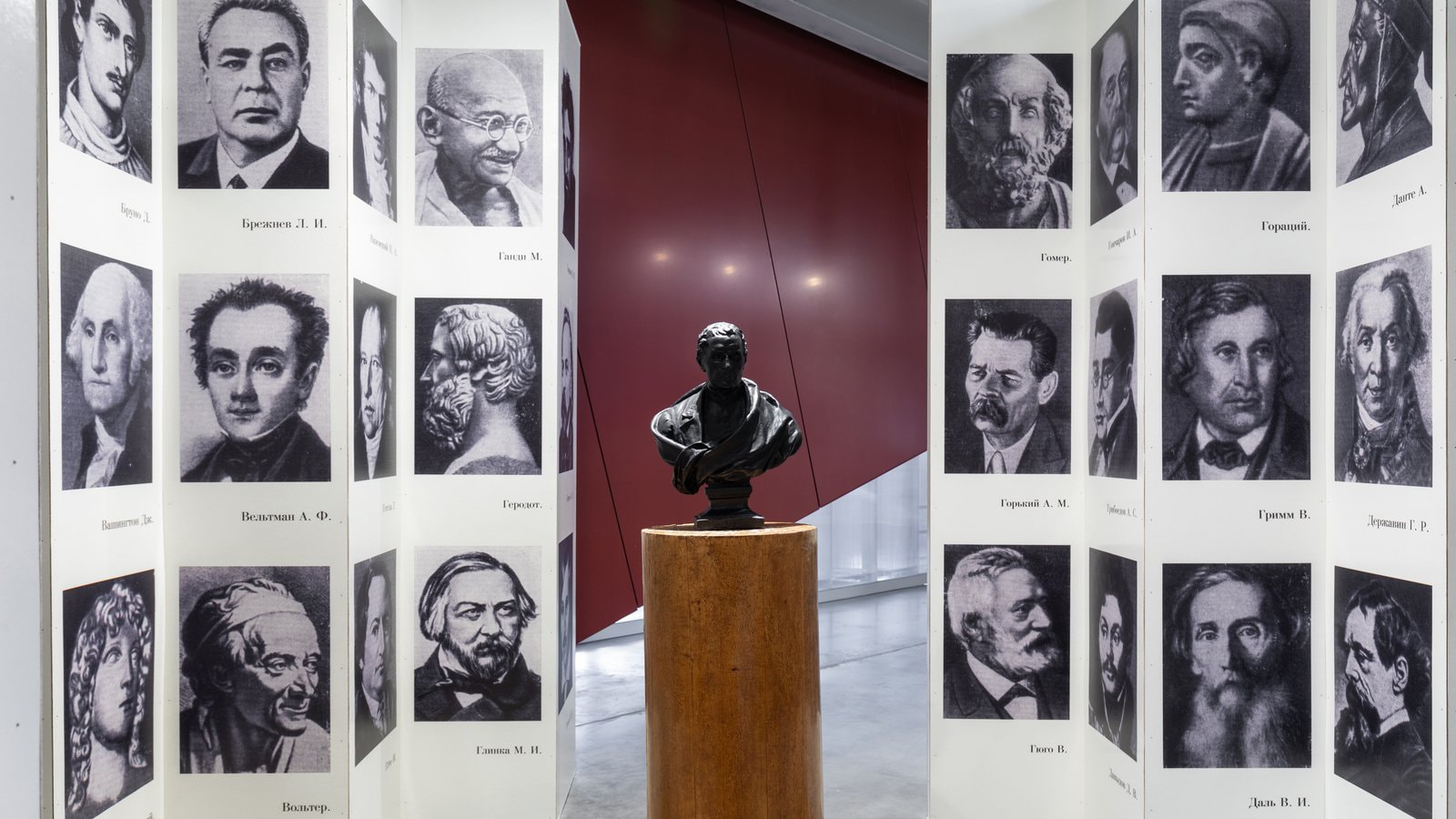Yan Ginzburg employs a variety of artistic and conceptual methods, whether it be making a series of objects using different techniques while referencing the Moscow conceptualists or developing exhibitions as total installations based on a sophisticated yet coherent system of citations from the history of Soviet unofficial art. Aiming to penetrate the past in order to signify and reconsider his trajectories in the present, Ginzburg goes far beyond archive research or interviewing the bearers of historical experience. For several years, his projects have been inextricably (one might even say retroactively) linked to the practice of the late artist Joseph Ginzburg, whose family name Yan Ginzburg officially adopted, along with responsibility for his heritage.
Commissioned by Garage for the exhibition, The Room of Geniuses brings together a chain of associations and allusions drawn from various sources. The fact that the space itself is inhabited by geniuses is a direct reference to Joseph Ginzburg’s dream, as mentioned in his diary, of living in a spacious room with walls covered with portraits of great people. The installation’s form, which resembles a screen, paraphrases the display format used by Ilya Kabakov to exhibit albums such as Sitting-in- the-Closet Primakov, their protagonists’ lives often unfolding in closed, claustrophobic spaces.
The motif of citation in The Room of Geniuses can also be examined through Vladimir Vorontsov’s book Symphony of Reason, recommended to Joseph Ginzburg by a friend in a letter. The book contains aphorisms by great thinkers and Soviet party leaders. Vorontsov allegedly compiled this publication as a gift to his boss, Mikhail Suslov, who was the de facto number two in the country after Brezhnev. It is known that Suslov was not a great reader of books, but he enjoyed reading reviews and loved to “reinforce” his public speeches, articles, and statements with smart quotes.
Yan Ginzburg concludes: “The reconstruction of [Joseph] Ginzburg’s idea using Vladimir Vorontsov’s readymade ‘intellectual screen’ launches a complex game of associations between the Soviet Union’s ideological production and the unofficial art of the 1970s. The book’s illustrations are on 16 unnumbered pages that feature 144 portraits of geniuses arranged alphabetically on a table-like grid. If we were to present these illustrations in three-dimensional form, there would be a clear similarity between Symphony of Reason and Joseph Ginzburg’s ‘room of geniuses.’ After all, it’s likely that Vorontsov’s book was the starting point for Joseph’s idea.”
